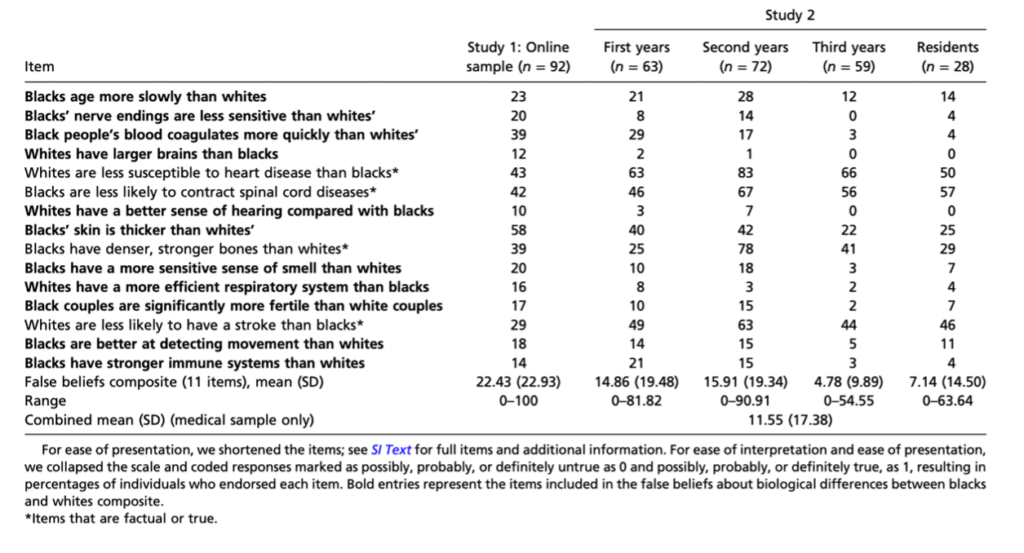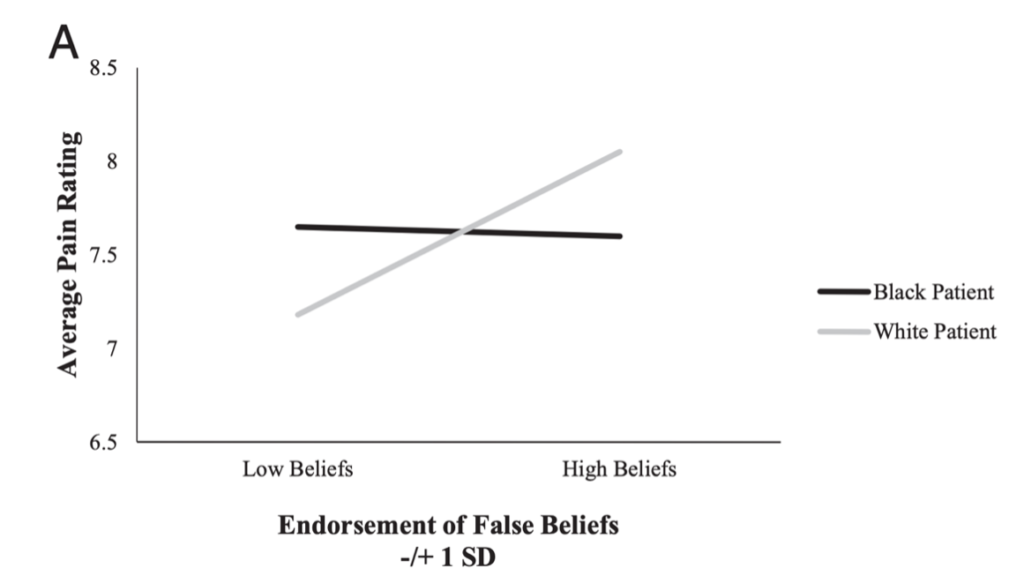
Before medical students in the United States can graduate, most are required to recite and abide by the Hippocratic Oath. By swearing upon this oath, doctors promise to uphold ethical standards expected of them and to do no harm. However, a study done by the Pew Research Center in 2019 found that Black patients are more likely than White patients to complain about professional misconduct among medical doctors.
This distrust between Black Americans and physicians stems from racial biases among medical staff, of whom the majority are White. Only 5% of physicians are Black (AAMC 2018). Accordingly, 75% of White Americans report never or rarely being treated unfairly by physicians based on race or ethnicity, while only 22% of Black Americans believe that they receive unbiased treatment from doctors (Clark-Hitt et al 2010). What are these racial biases? How does it affect doctors’ ability to treat Black patients?
Doctors’ Racial Biases Reduce Racial Equity
When doctors were asked to explain racial disparities in medical treatment in a 2010 study, nearly 75% of participants believed unequal treatment was due to the shortcomings of individual Black patients. They blamed black patients’ lack of adherence to advice of physicians, substance abuse, distrust, and skipping appointments as some of the reasons (Clark-Hitt et al 2010). These overgeneralizations can be harmful as they perpetuate racial stereotypes and can make patients feel as though their health issues are not valid medical concerns. Furthermore, these statements direct any blame away from physicians, suggesting that medical professionals do not believe that they contribute to racial discrimination within the medical field. However, this is not the case.
A shocking percentage of physicians, who have taken up to fourteen years of professional schooling, believe in medical misconceptions about Black Americans. Medical students and residents who participated in a study conducted by the University of Virginia believe 11.5% of false beliefs pertaining to Black people’s health, such as African Americans having thicker skin than White people. Approximately 50% of participants were quite confident in affirming at least one of the false belief items given to them (Hoffman, Trawalter, Axt, Oliver 2016).

As more false beliefs were endorsed by medical staff, the more likely participants were to rate the pain tolerance of black patients as lower than that of white patients. Doctors often underestimate the pain tolerance of Black patients, which is a misconception that dates all the way back to slavery in the United States (Hoffman, Trawalter, Axt, Oliver 2016).

Black Patients Are Aware of Racial Medical Biases
Doctor’s racial misconceptions impact their ability to treat Black patients properly and equally. Black Americans are less likely to be prescribed preventive medications, and they are usually not referred for aggressive, and potentially lifesaving, treatments compared to White Americans (Greer 2010). Furthermore, Black patients report receiving only 40% of the quality measures, such as patient safety, person-centered care, and effective treatment, that are provided to White patients. These disparities indicate that physicians are not providing the same high level of care for Black Americans compared to White Americans (2019 AHRQ) (2019 National Healthcare Quality and Disparities Report).
These medical racial biases are visible through doctor’s interactions with Black patients. In 2010, Tawanda M. Greer from the University of South Carolina asked African American hypertensive patients about their experiences with healthcare providers, and every patient said that they feel racially discriminated against in clinical settings. Avoidance of touch was a flagged as a huge indicator of racism, as this action makes patients feel as though their doctors purposefully avoid skin-to-skin contact. Furthermore, Black patients believe that it is common for providers to make assumptions about socioeconomic status. Many believe that their doctors rush through medical checkups and next steps in treatment because they assume that they cannot afford to pay for procedures. Encounters driven by racial stereotypes such as these cause Black patients to expect racial mistreatment from physicians until proven different. In fact, patients from Greer’s study claimed that they consciously decide not to schedule follow-up appointments or trust referrals/prescriptions by providers they believe to hold racial prejudices (Greer 2010).
Doctors’ racial biases fuel Black Americans’ distrust in the United States healthcare system. Although medical staff may not realize the implications of their biases and behavior, their unconscious prejudices drive Black Americans away from medical clinics and leaving them more vulnerable to health risks, contributing to health disparities in this country.
Sources:
- Clark-Hitt, Rose, Malat, Jennifer, Burgess, Diana, & Friedemann-Sanchez, Greta. (2010). Doctors’ and Nurses’ Explanations for Racial Disparities in Medical Treatment.Journal of Health Care for the Poor and Underserved https://doi.org/10.1353/hpu.0.0275
- Figure 18. Percentage of all active physicians by race/ethnicity, 2018. (2018). Association of American Medical Colleges. https://www.aamc.org/data-reports/workforce/interactive-data/figure-18-percentage-all-active-physicians-race/ethnicity-2018
- Greer, T. M. (2010). Perceived Racial Discrimination in Clinical Encounters among African American Hypertensive Patients.Journal of Health Care for the Poor and Underserved, 21(1), 251-263. https://doi.org/10.1353/hpu.0.0265
- National Healthcare Quality & Disparities Report. (2019). Agency for Healthcare Research and Quality. https://www.ahrq.gov/research/findings/nhqrdr/nhqdr19/index.html
- “Trust and Mistrust in Americans’ Views of Scientific Experts.” (2019). Pew Research Center. https://www.pewresearch.org/science/2019/08/02/trust-and-mistrust-in-americans-views-of-scientific-experts/